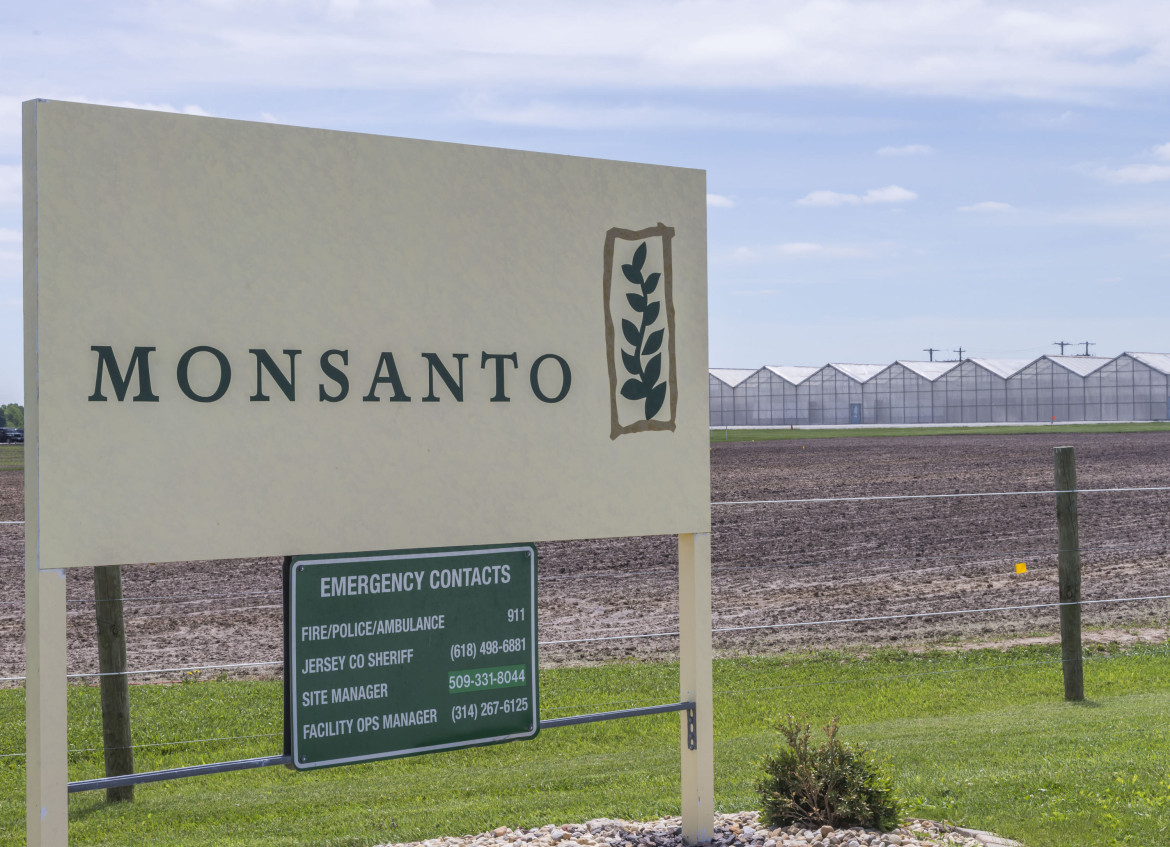By Eric Ferrero, Executive Director
Johnathan Hettinger’s five-year investigation for the Midwest Center for Investigative Reporting showed that Monsanto launched a new system of weedkillers knowing they would damage fields and farms across the U.S., but they pushed forward anyway in order to corner the soybean and cotton markets.
Hettinger’s reporting, published in the St. Louis Post-Dispatch “provides the most comprehensive picture of what Monsanto and BASF knew about dicamba’s propensity to harm farmers’ livelihoods and the environment before releasing the weedkiller.”
Hettinger and his team applied for a grant from the Fund for Investigative Journalism in 2019 to help cover the costs of submitting Freedom of Information Act requests and combing through large volumes of documents, as well as travel expenses to identify and interview farmers and other sources. He had been pursuing the story for several years but needed financial support to finish the report – and he got it from the Fund for Investigative Journalism.
I asked Hettinger to share how he uncovered the story, how other reporters can approach long-term stories and how journalists can understand rural and farming issues better.
You’ve been investigating these corporations for five years. What tips do you have for other investigative journalists about digging in for the long haul?
I didn’t set out to investigate the corporations for five years. I just wrote a couple stories about a problem that people were complaining about. And the story escalated as the problem continued, and then kept going because the behavior of the corporations, and the U.S. government, became more and more egregious. I would say I’ve learned a lot about just identifying who is responsible for the problem up front. If I were starting an investigation now, I would absolutely look at who is responsible for regulating the issue, what they’re supposed to do and why they didn’t meet that standard. I would also take better notes over time, and use those notes to tell a more complete story. So many of the tidbits I learned a few years ago are still relevant today.
It’s often very difficult to show that a company knowingly engaged in wrongdoing. You did it largely with internal emails and documents, some of which were remarkably candid. How did you get that material?
The material was available through lawsuits. I sat in a courtroom for three weeks, as lawyers presented these documents as a part of testimony, and I jotted down the documents as quickly as possible, not knowing if I would ever be able to see them again. Later, after the judge ruled the documents could be released, I was able to go through my notes and find the best material, but also dozens of more interesting things that were included in the documents.
Some of those documents – like emails where employees refer to the company’s own defense as “bullshit,” warn of possible lawsuits, and call the situation a “ticking time bomb” – must have been buried in troves of material. What was your process for sifting through so many documents over several years?
I received the documents in Google folders from interested parties, and then uploaded them to DocumentCloud. I sorted through the documents page by page, annotating them on the side. After I annotated them, I made a timeline of events, supported by the documents, which I then expanded the writing on each event to eventually tell the full story. I then edited that down and rearranged it in a final story.
Your story doesn’t only show that corporations engaged in wrongdoing, but that the federal government enabled it. Now, former Iowa Governor Tim Vilsack could be tapped as the new Agriculture secretary and has been called “Mr. Monsanto,” for his history of siding with the company. What questions does your investigation raise that he should be asked?
These questions are more for the EPA, but the USDA also plays a large role in the agricultural system in the U.S. What, if any, triggers will be made before herbicides like dicamba can no longer be used? Do farmers have a right to grow what they want to without being harmed by other herbicides? What role should the federal government play in facilitating a more environmentally friendly and human-health friendly agricultural system?
How does your background growing up in farming and agribusiness help you report these stories – and how can journalists who don’t have that personal history get more familiar?
It helps me to report these stories because I do have a baseline of knowledge about agricultural practices. My dad was a corn and soybean farmer until I was five, but has not worked in ag since then. Additionally, I have many family members that work for large agricultural corporations, as well as smaller agricultural businesses. I have family members that are farmers, growing these crops. But we don’t necessarily talk about my stories or these issues. It is more just a general familiarity of the issues.
I think I’ve learned as much about specific agricultural issues from reading, both daily coverage and longer more investigative pieces. I watch agricultural economic talks that help explain the business of farming, which are extremely useful for understanding how these processes work. I think also, one important thing is, don’t be afraid to ask the dumb question. If you don’t know about ag, just ask. Many people are willing to help, and you’d rather learn it from a source than get something basic wrong, which will cause you to lose credibility.




